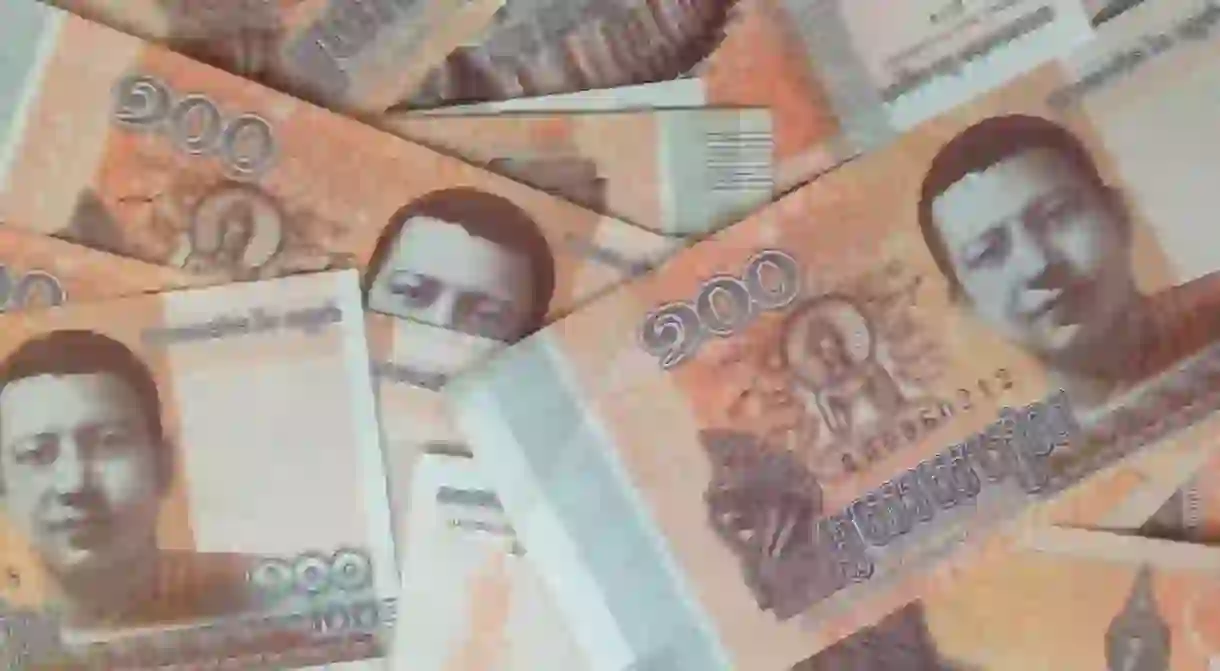KHR: Explaining Riel, Cambodia's Currency

While the official Cambodian currency is the riel, money can get a little complicated in the country, thanks to the wide use of the dollar. Here is all you need to know about the riel and spending cash in the Kingdom of Wonder.
A history
The riel made its debut in 1953 – the year Cambodia gained independence from France – when the Cambodia branch of Institut d’Émission des États du Cambodge, du Laos et du Vietnam issued notes dually denominated in riel and piastre, the currency of French Indochina from 1885 to 1952.

The origins of the term riel are debated, with some claiming it stems from the Khmer word for small fish. Others say it comes from the high-silver Mexican real that was used by Malay, Chinese and Indian merchants in the mid-19th century throughout Cambodia.
This version of the riel ran until 1975, when the Khmer Rouge took over the country and money was abolished.
In the wake of the Vietnam invasion of 1979, which ousted the Khmer Rouge, a second and current version of the riel was introduced in 1980 when the Central Bank was re-established. With no money to replace the new notes and the economy in disarray, the government had to hand out the money to the public initially.
Riel vs Dollar
While the riel is the official currency of Cambodia, the US dollar dominates. In fact, official figures claim there’s a 90% level of dollarisation across the Kingdom.

Dollarisation started in the 1980s and continued into the 1990s, with the United Nations Transitional Authority in Cambodia – one of the largest and most expensive UN operations in history – that was based in the country in 1991 and 1992, flooding US dollars into the country.
A lack of public confidence in the riel, with inflation hitting as high as 177% a year, also encouraged use of the dollar.
Today, the dollar is still most widely used, with riel being dished out as change for anything less than $1. The exchange rate sits at about 4,100 riel for $1.
There has been recent talk of de-dollarisation, although this seems a long way off.
Other foreign currencies are used in some border parts of Cambodia. For example, in many places in Battambang and Pailin – both close to the Thai border – the Thai baht is commonly accepted.
Notes
You’ll definitely find yourself walking around Cambodia with lighter pockets because there are no coins in the country, only notes.
There are 10 denominations of riel: 50, 100, 500, 1,000, 2,000, 5,000, 10,000, 20,000, 50,000 and 100,000. The 50, 50,000 and 100,000 notes are rare.

Tips for splashing your cash
It’s worth noting that Cambodia remains, for now, a cash-centric economy, where public confidence in the banking system is still being restored. Chat to many of the elderly and even middle-aged and they still stash their cash under their mattress rather than at the bank.
While many of the major outlets, hotels and restaurants now accept credit and debit cards, the vast majority of the country’s small- and medium-sized businesses only accept cash.
Tatty riel notes may be widely accepted but it pays well to remember that dollar bills need to be kept crisp, clean and most importantly untorn, especially for larger notes. If your $100 bill has the tiniest of tears in it, the chances are it will be rejected.
There are also a lot of fake US dollars floating around Cambodia so don’t be afraid to check your change and ask for it to be swopped if you’re suspicious.
It’s also worth noting that breaking large notes can be tricky, particularly in local shops and street stalls or restaurants, so having small dollar bills or change in riel on you at all times is a wise move. And in remote areas you’ll be hard-pressed to find an ATM, so cash really does rule in Cambodia.













